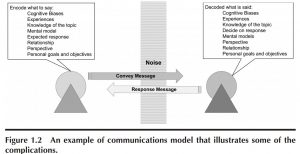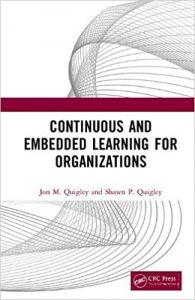Limits of Asynchronous Communication
Limits of Asynchronous Communication
In an earlier blog post we wrote along with contributions to a magazine on asynchronous communication. Businesses are forced to make decisions, that they would rather not make, such is the time of Covid. We cannot just go to the office and continue to work as we once did, perhaps short-term, but who knows. I was talking with an engineer not so long ago, about
We must recognize that not all situations and circumstances can benefit from asynchronous communication. Think beyond communication. For example, consider the communication type required to develop the work environment or create a true team. In fact, it could be easily argued that the disconnection from the other individuals is detrimental to both.
A significant part of project management and successful product development requires anticipation of events that can go wrong, as well as predictable emergent events. To effectively do this will require more than emails and physical documents in general, but team member discussion and shared experiences.
Communication: A Simple Definition
Merriam-Webster defines communication as a process by which information is exchanged between individuals through a common system of symbols, signs, or behavior.[1] When discussing the learning organization, we will spend considerable time discussing communication as this is how perspective is shared. Communication, both informal and formal, are the mechanism used to uncover situations that will enable the team to collectively learn. In addition to learning, communication is how we propagate what is learned to other parts of the organization. There are several communications models. These models depict some of the blocks associated with the communication. However, we all likely have failed communication experiences with others even when we think we have effectively communicated. While there is no one sure-fire method to ensure we have been effective in our attempt to communicate with someone or a group of people, asking the intended recipient(s) what they heard can help determine the effectiveness of your communication.
There are many forms of communication, face-to-face discussion, e-mail, phone, and so on; each one of these communication methods has benefits and drawbacks relative to effectiveness to communication. As with any form of communication, or even actions for that matter, attention to detail for both in both sending and receiving communication is critical. By attention to detail, we mean only communicating exactly what is needed to be communicated while minimizing distractions that will allow for misinterpretation to occur. Distractions come in many forms and are part of any type of communication, from verbal to even an e-mail. E-mails have embedded distractions just by their nature.[2]
A Model of Communication
The graphic below is from Continuous and Embedded Learning for Organizations,

Limits of Asynchronous Communication
Written material is subject to interpretation by the recipient. All communication methods are. However, in writing the feedback loop has a delay. We cannot immediately ask questions. Without a feedback loop, it is not possible to determine the fidelity of the result compared to intention. People have different models for what specific words or phrases mean often based upon experiences. One thing we can do to help the interpretation issue is to work toward a common lexicon of key or recurring ideas. In this way, some of what we write or say will not require an interpretation but will be based upon agreed-upon mental models and definitions.
Environment and Team Development
To smooth work effort, we develop a common and shared lexicon for the team members. This shared lexicon consists of mental models of the process and very specific language for keywords. The foundation ensures what is produced from the writing, matches the expectations. This is especially true and necessary when there is little or no feedback to help clarify. To get past this, as manager of a newly built test and verification group, we took training and obtained the certification on the topic of testing, the entire team, in two or three batches. The goal was not to obtain the certification, though that was well and good. The objective was to provide a common platform or mental models and language from which we could build our own relevant models and language. This provided a base, a synchronizing point if you would, for communication that provided us with solid terra terra-firma which we could extend.
I have been part of more than 7 US Patents, and each of those was the result of an unscripted interaction between a number of other people. From experience, this interaction is especially important at the start of the collaboration.
[1] Communication. (n.d.). Retrieved July 23, 2018, from https://www.merriam-webster.com/ dictionary/communication
[2] Quigley, J. M., & Quigley, S. P. (2020). Continuous and embedded learning for organizations. Boca Raton, FL: CRC Press/Taylor & Francis Group.

